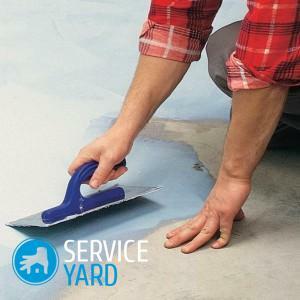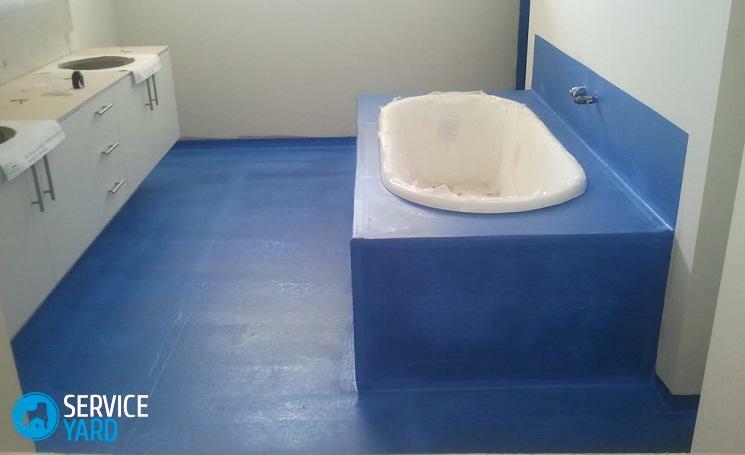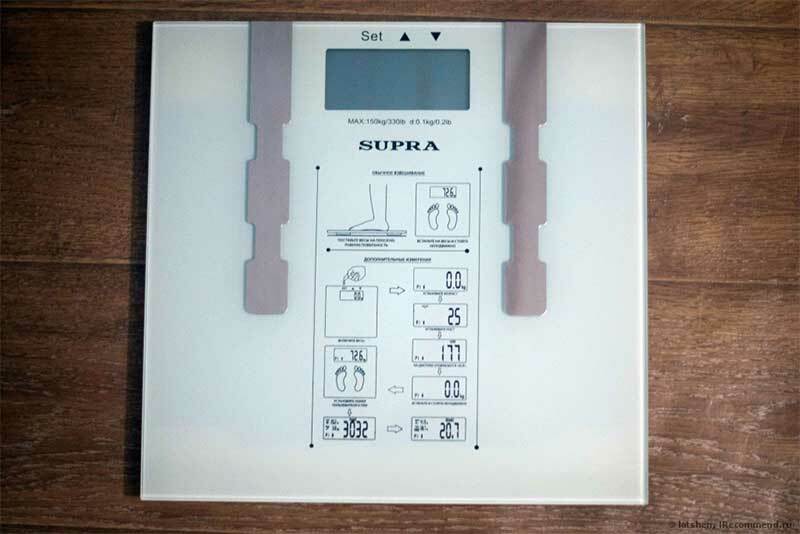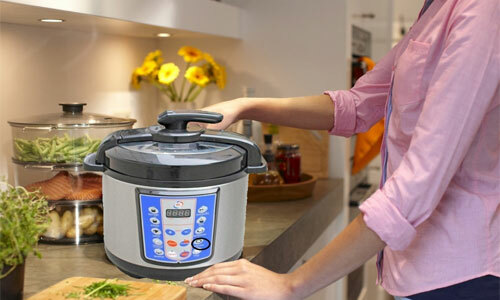
- Lining
- Overlay insulation
- Painting insulation
- Selection of coating for the tile
- Conclusion
One of the most important stages in the repair of bathrooms is their finish. Here it is necessary to take into account not only the style solution of the premises, but also its features. Constant humidity, large temperature fluctuations force the owners to select the material with particular care. No less important is the waterproofing of the room. Below we will understand what is needed for waterproofing the bathroom under the tile, which is better and what it is. All materials for waterproofing can be divided into several types. And first of all we'll talk about the lubricating options.
to content ↑Lubricating
These tools are based on resin and synthetics with the addition of bitumen or liquid rubber. The compositions are very elastic and allow the creation of a waterproof film on the surface. Such funds are applied to a previously prepared cleaned surface, and they fill all uneven areas.
Important! Most often, coating compositions are used in small rooms with an area of no more than 15 squares.
Their appearance is different. It can be:
- powders;
- pastes, which need special preparation;
- finished liquid formulations.
Important! Ready-made compounds are usually more expensive. But such waterproofing of the bathroom under the tile is better for beginners because of the simplicity and ease of use.
All lubricating mixtures can be divided into four main types.
Bitumen-polymer compositions
These products are already sold ready-made. They contain astringents and polymer compositions. Such compositions are characterized by excellent waterproofing and elasticity. Also they are not toxic and perfectly tolerate large temperature fluctuations.

Bitumen-latex compounds and liquid rubber
These products perfectly cope with the filling of cracks and unevenness in the floor covering. The formulations are used on a clean, pre-primed surface. After using them, the surface will be completely protected from moisture ingress. The mixture is also non-toxic and durable.
Cement-polymer compositions
Compositions of these agents include cement, which allows the product to quickly grasp the surface. These funds are used both as a waterproofing compound, and when a small leak repair is necessary.
Important! They are equally well suited for processing both the floor and the walls of the bathroom.
Acrylic and liquid glass - an inexpensive option
If the budget for expensive materials is not enough, you can use a very cheap option to protect the surface from moisture. With these goals, acrylic based enamel will do well. To obtain a moisture-insulating layer, it is applied several times, usually in four or five layers. The enamel itself is already sold ready for use, and its coating has sufficient strength and elasticity to resist water.
Important! This option has its drawbacks. With the passage of time, acrylic can crack. Then the moisture insulation will naturally suffer greatly.
As an alternative to acrylic, liquid glass can be used. It has excellent moisture protection and very well penetrates into all the holes, due to which the waterproofing layer appears. In addition, the material has the properties of antiseptic, which allows to protect the coating not only from moisture, but also from mold and other microorganisms.
We talked about one of the types of waterproofing - lubricating. But in order to understand which waterproofing is best for the bathroom, you should also familiarize yourself with other options. Let's talk about them further.
to content ↑Oak insulation
These are insulating materials in rolls, the composition of which includes glass, rubber, various fibers and bituminous mixtures. Below the material is covered with special glue, which allows you to firmly attach to the surface. On top of the product are coated with a special impregnation, which creates ideal conditions for compatibility with tile glue.
The material is characterized by durability and strength at low cost.
Important! Of the significant disadvantages can be identified an unpleasant smell of materials, and high requirements for surface preparation. It should be clean and perfectly flat.
Oak insulation can be divided into two types:
- self-adhesive materials - have an adhesive coating, do not require any tools for installation;
- fusible - attached to the surface with a gas burner.
The method of laying material is overlapped, and air bubbles are removed by rolling their surface with a roller.
Important! Most often, such materials are used in large areas.
to content ↑Painting insulation
The painting method involves the use of liquid agents that solidify, but do not lose their elasticity. Usually it is waterproof paints. The composition of such materials includes polymer compositions, epoxy resin, talc and asbestos.
Important! These materials perfectly protect the surface from corrosion, as well as fill all the chips, voids. The cost of coatings is available, but they have a big minus - unfortunately, such compositions do not differ in durability.
Of course, what waterproofing to choose for a bathroom, everyone decides for himself, considering the repair budget, the finishing method and other nuances. We can only acquaint you with the currently popular ways to protect the premises.
As an example, we will try to answer the question of which waterproofing to choose for a bathroom under the tile.
to the contents ↑Selection of tile coating
The tile itself is waterproof, but it has seams, which are a weak link. If you choose the correct waterproofing, perform all the work well, you will create a completely moisture-repellent layer.
For tiles, there are practically no special conditions for choosing materials to protect against negative effects of water. But:
- Professionals do not recommend the use of waterproofing as a waterproofing under the tile. Since the paint lasts a relatively short time, in comparison with other compounds, after the destruction of its structure, the wall can become moldy, which not only separates part of the tile, but can lead to health problems.
- But a good choice under the tile will be the use of bituminous, polymer compounds, cement-based or liquid impregnated in combination with a pasting method.
- For the treatment of the floor, oklechnye options are suitable, of course, if they are used together with good lubricating agents.
Important! While working on the protection of the floor, do not forget to carefully process all the corners.
to the contents ↑In conclusion
When the best waterproofing for the bathroom is selected, it remains only to find out what kind of coating to choose for the floor in the bathroom. Obviously, it must be moisture resistant. We list the moisture-proof materials that are ideal for your bathroom:
- porcelain stoneware;
- ceramic tiles;
- treated hardwood.
But whatever quality material you choose, in any case, the bathroom will need to be protected additionally. On how good a waterproofing product will depend on the longevity of your repair as a whole. With improper selection, you risk not only bring the room, materials in an inappropriate condition, but also infect the coating with a fungus. Qualitative processing of all walls, ceiling, floor will necessarily prevent the negative impact of moisture.



